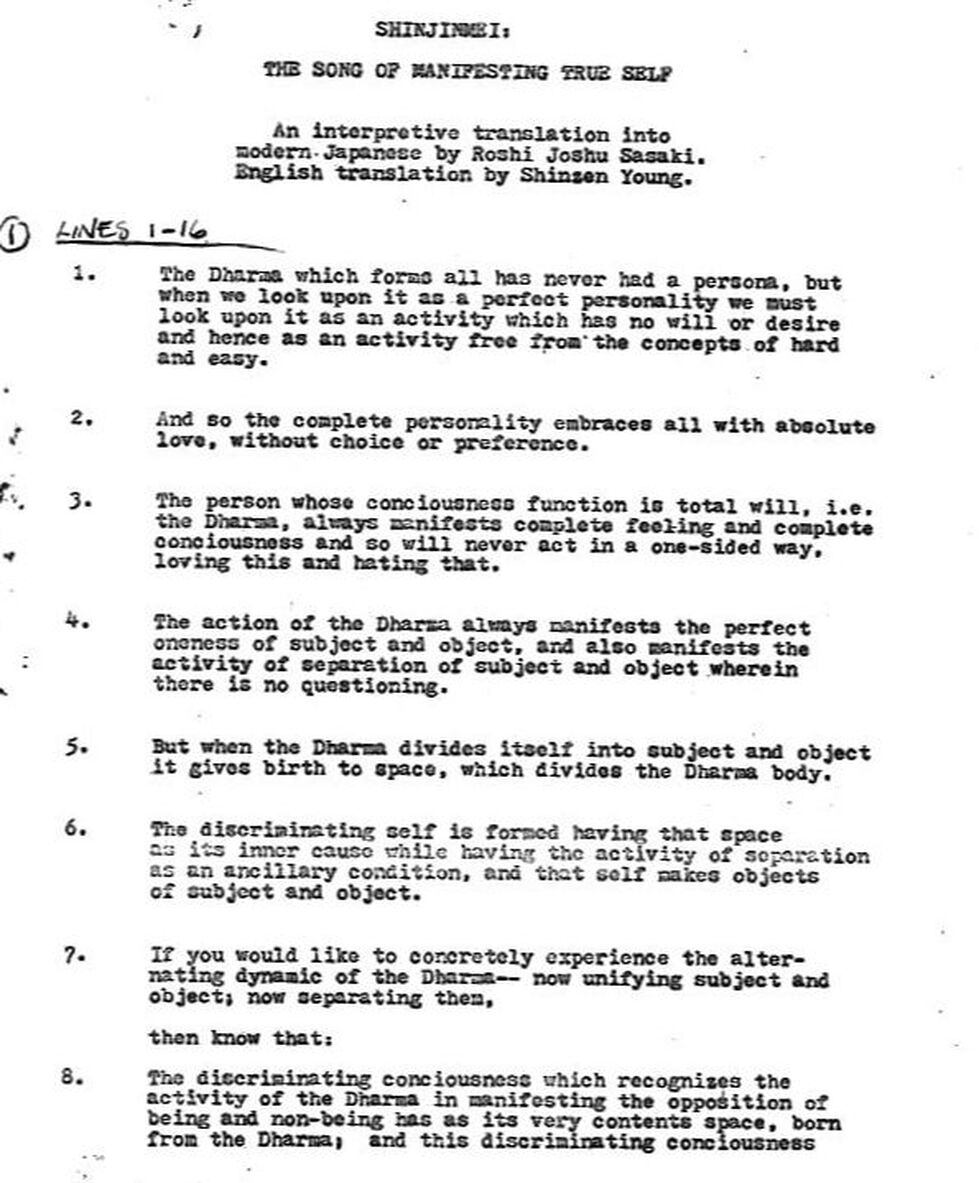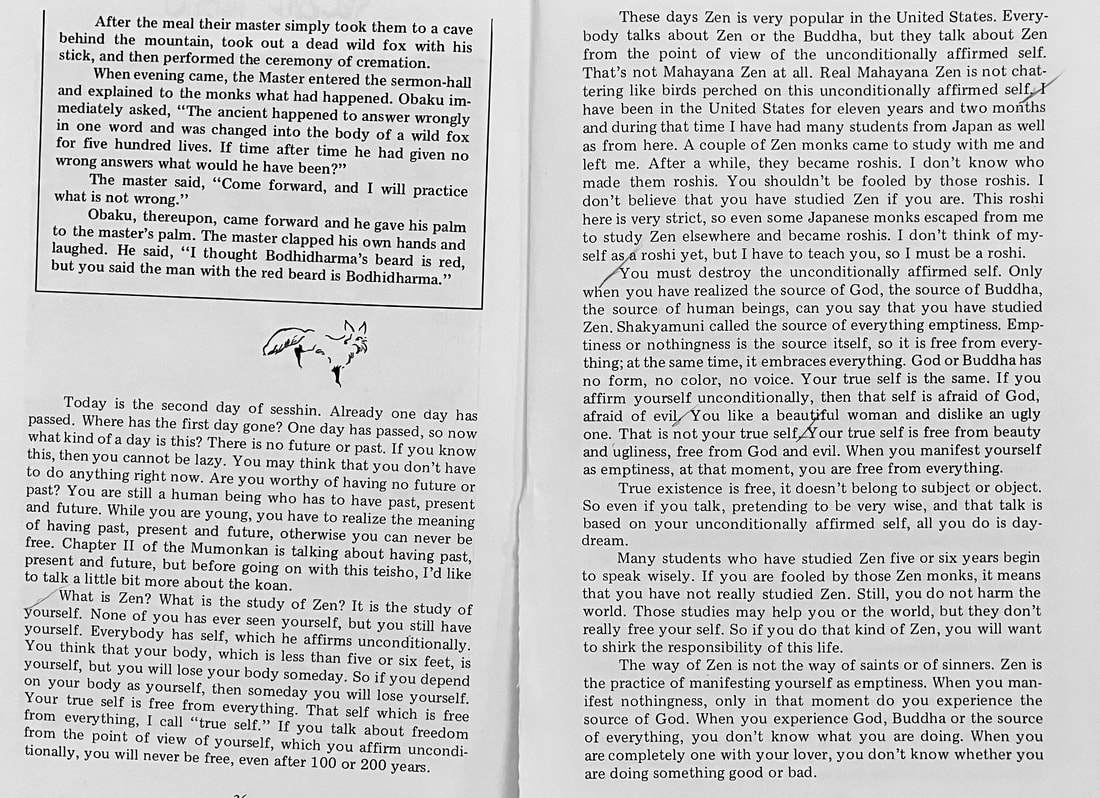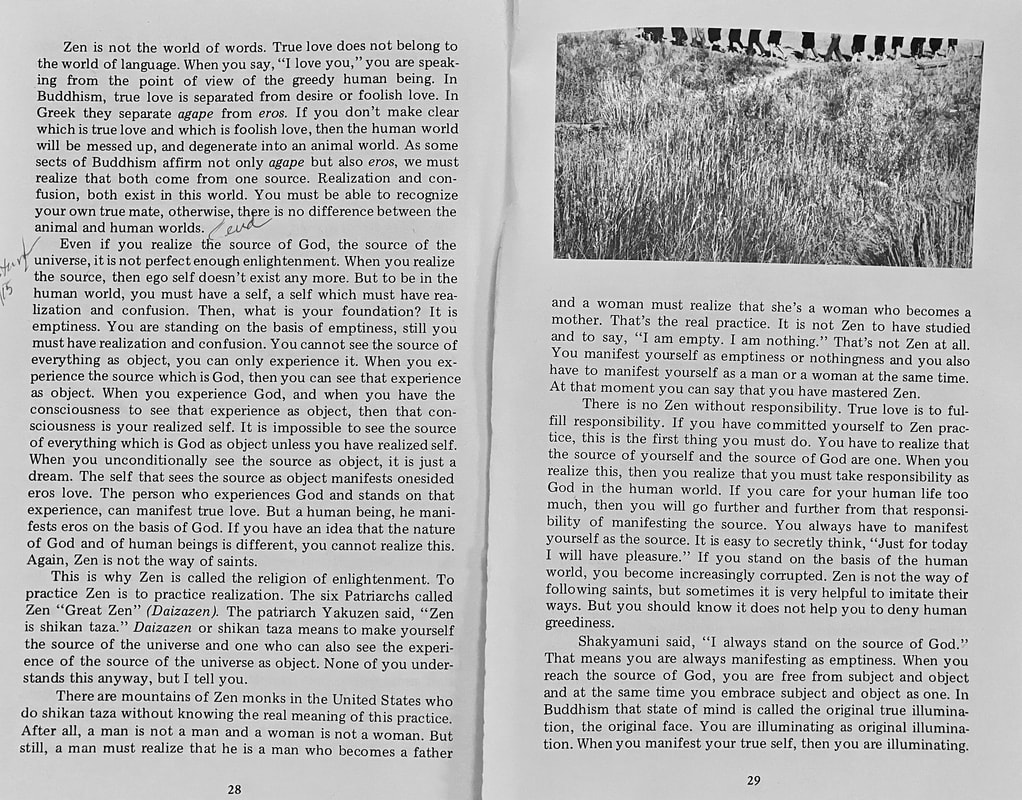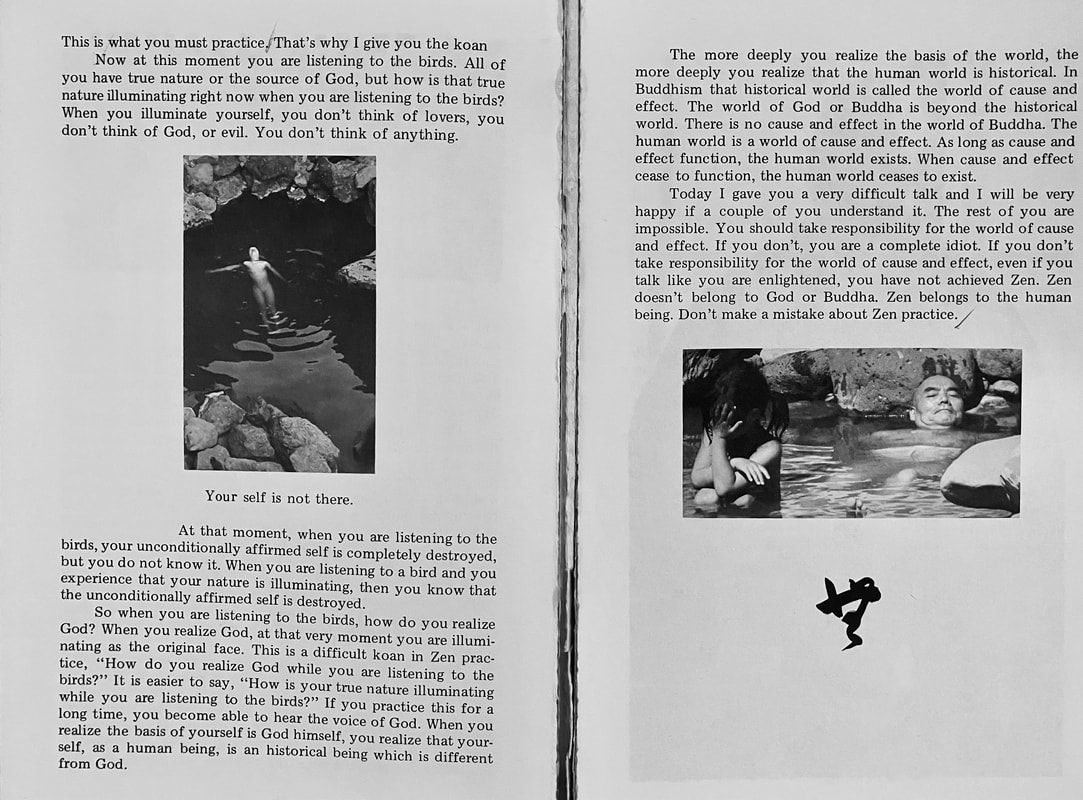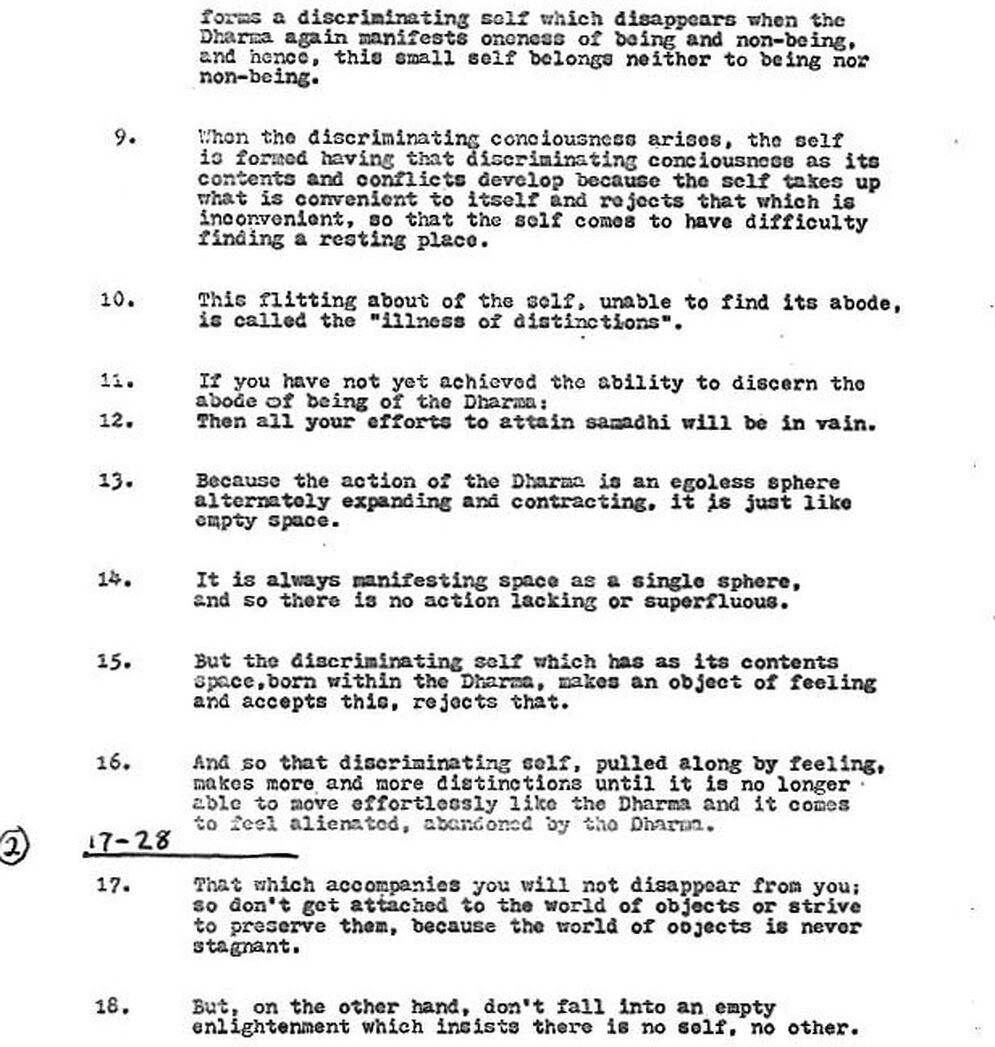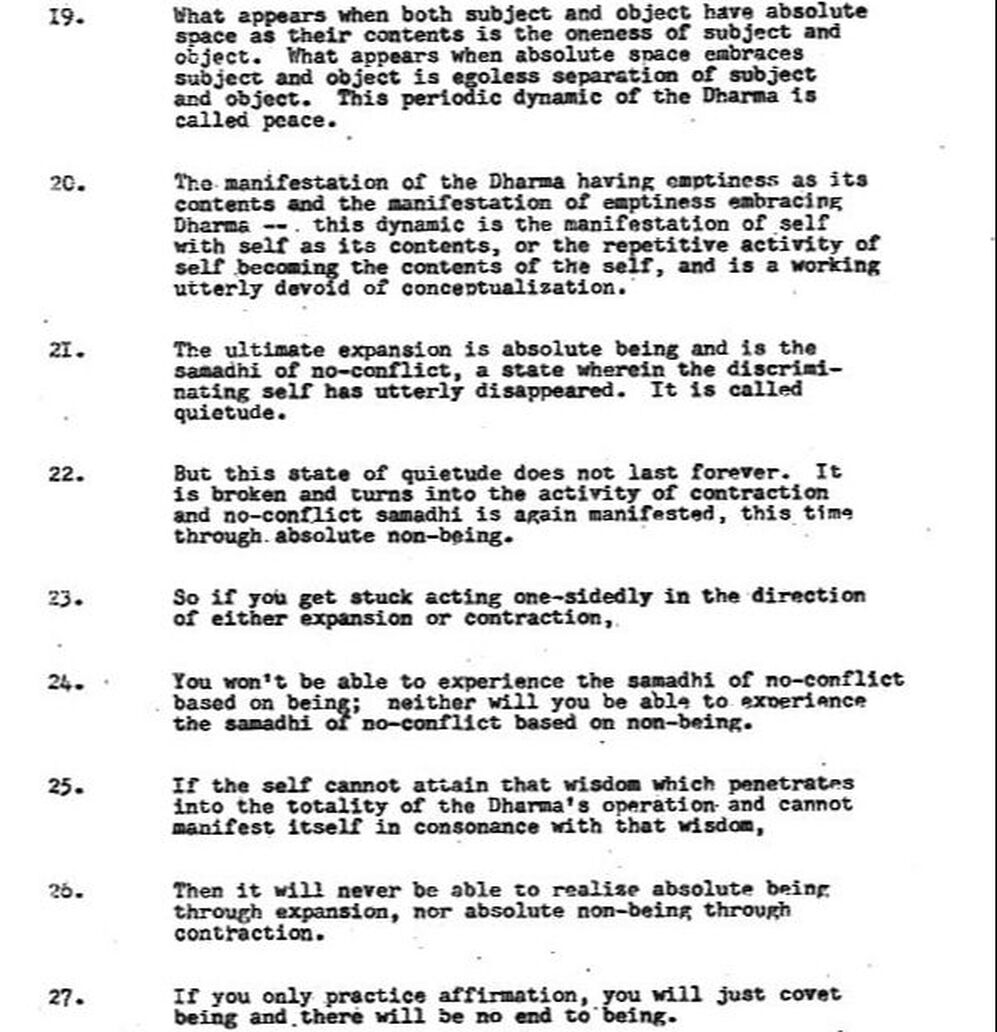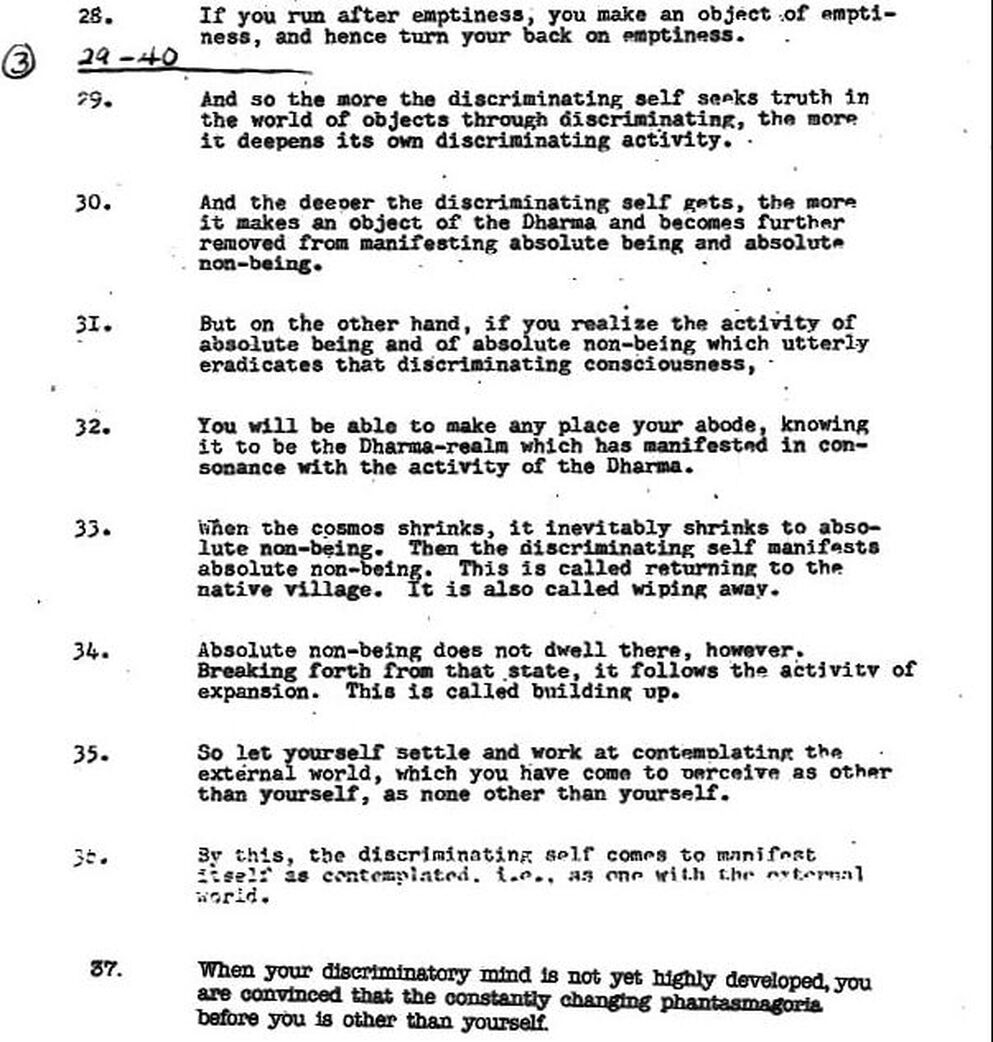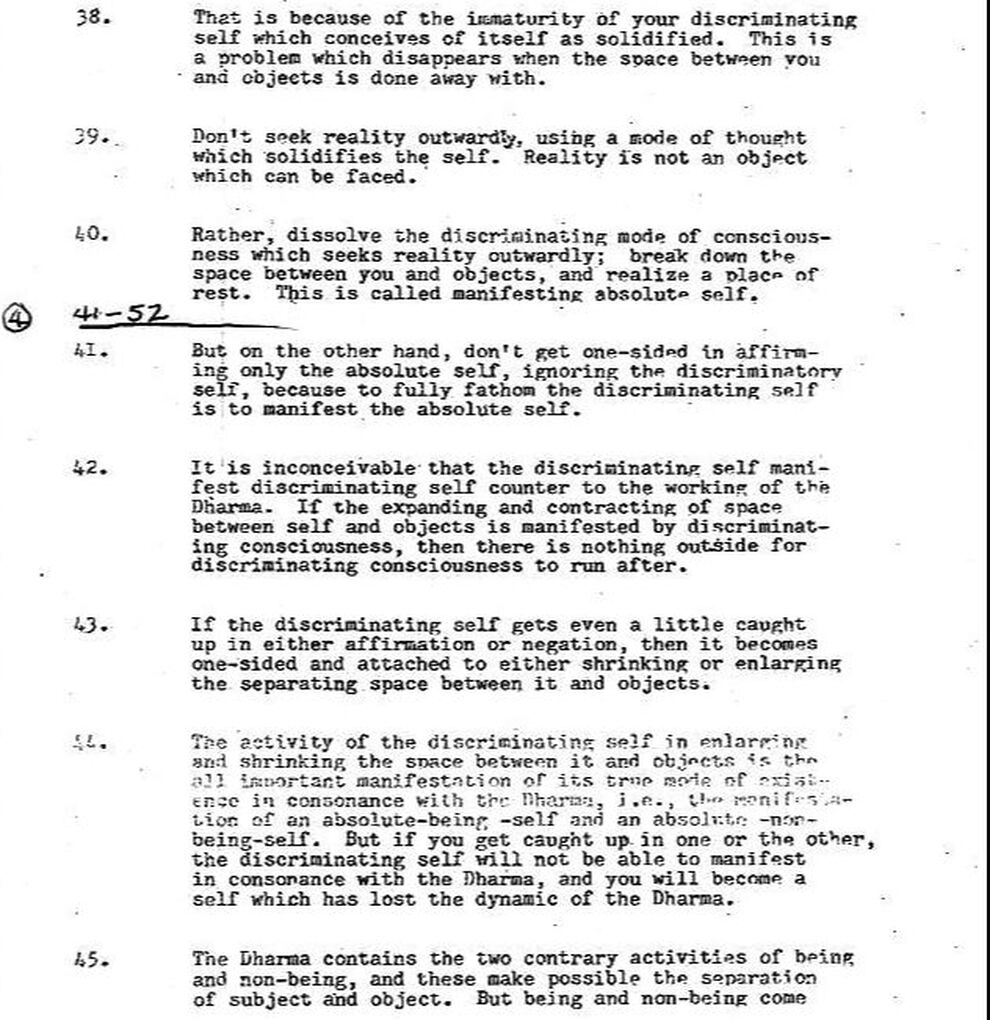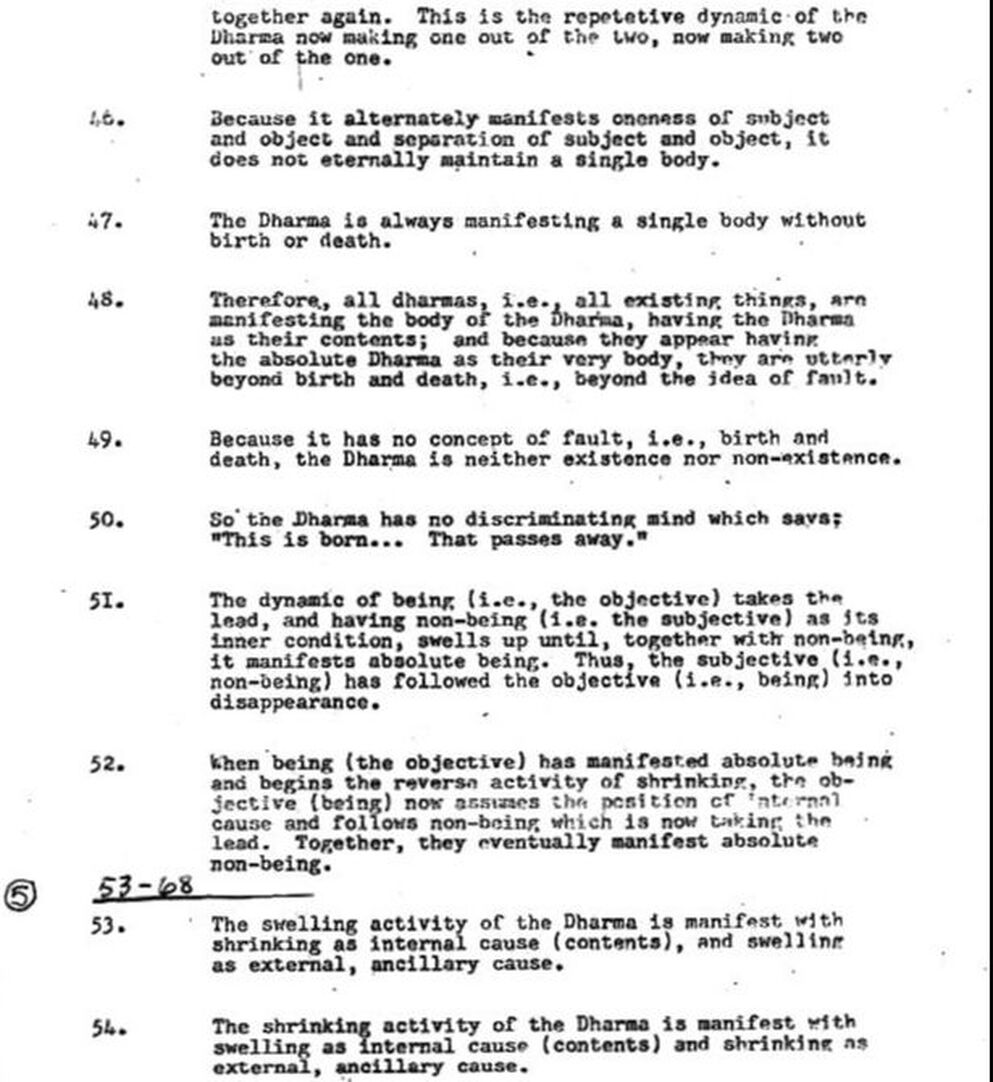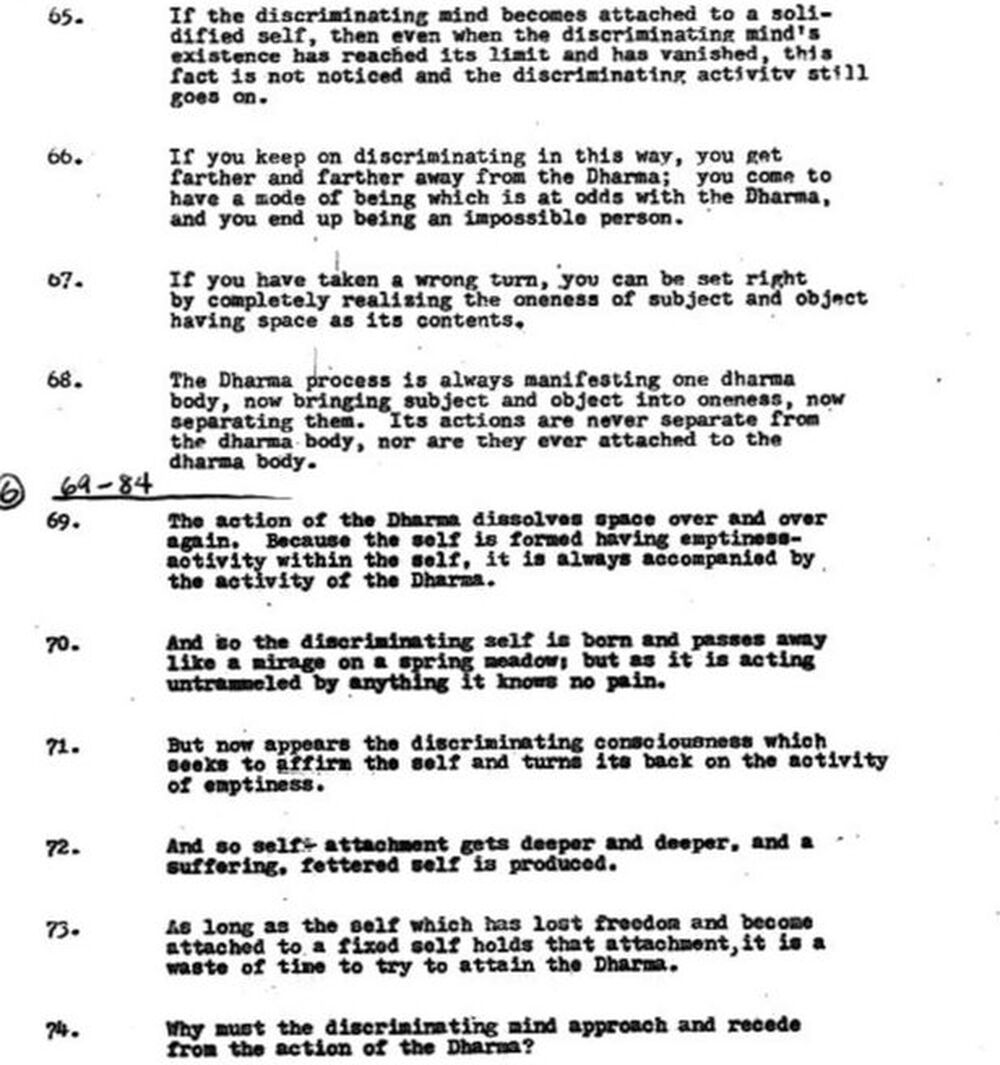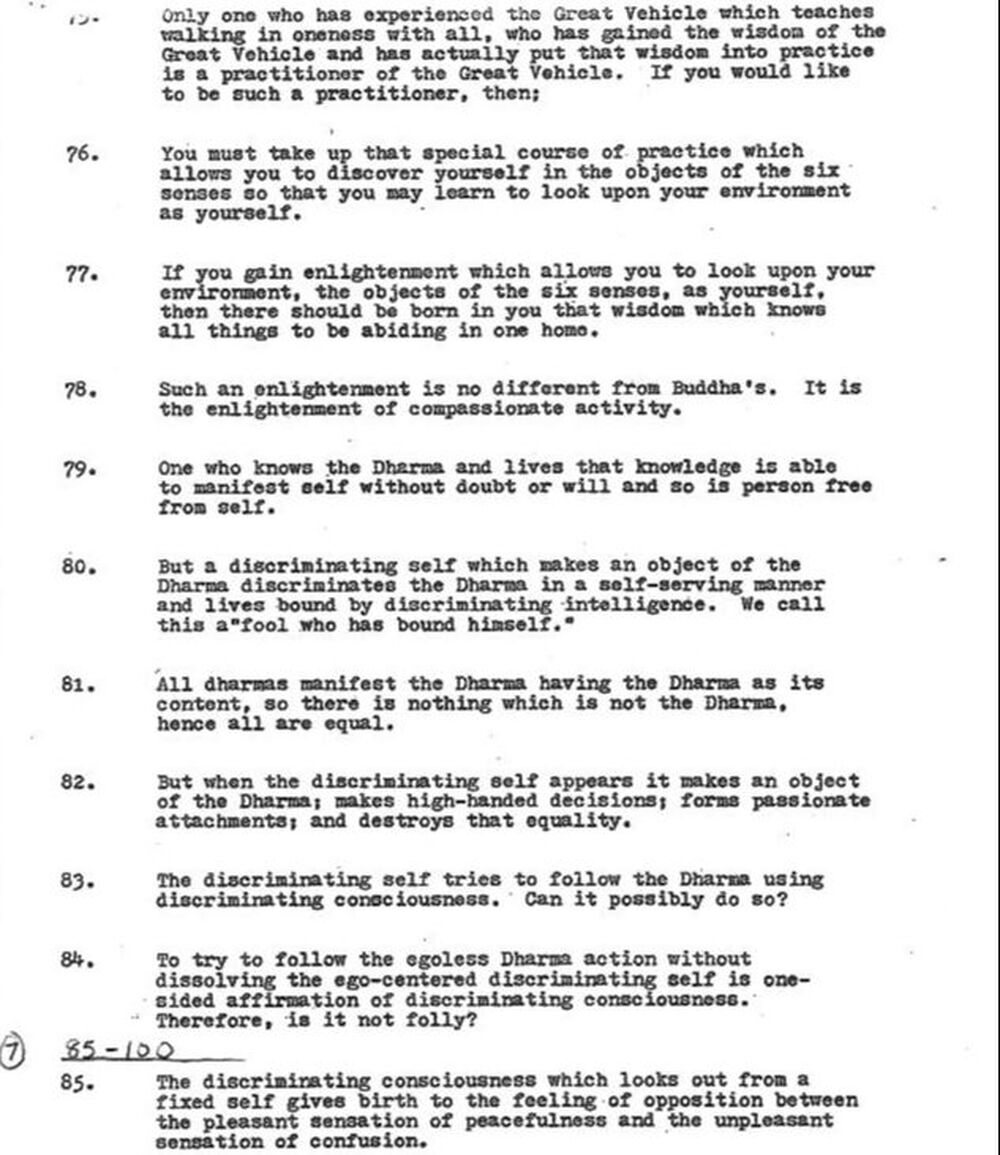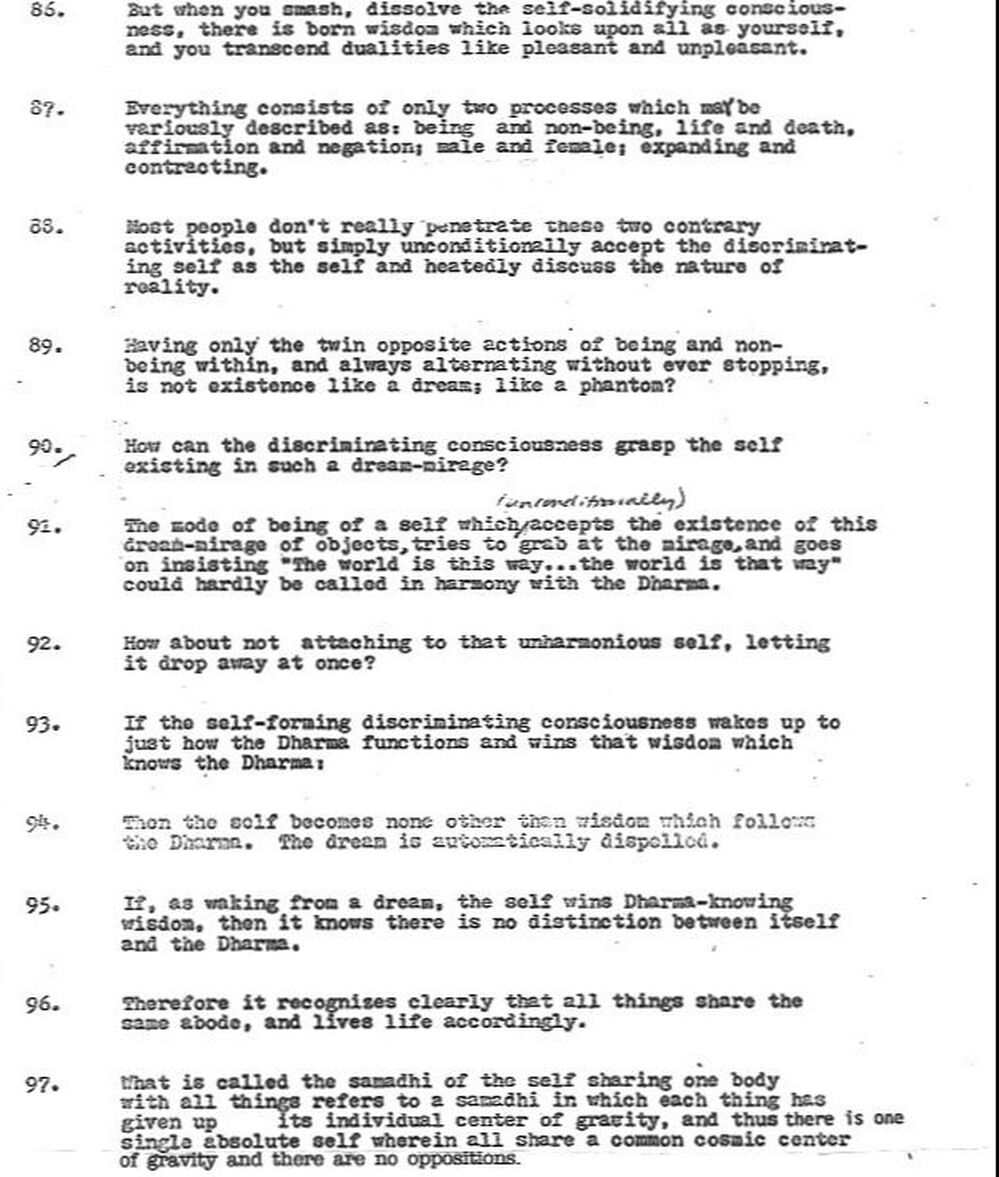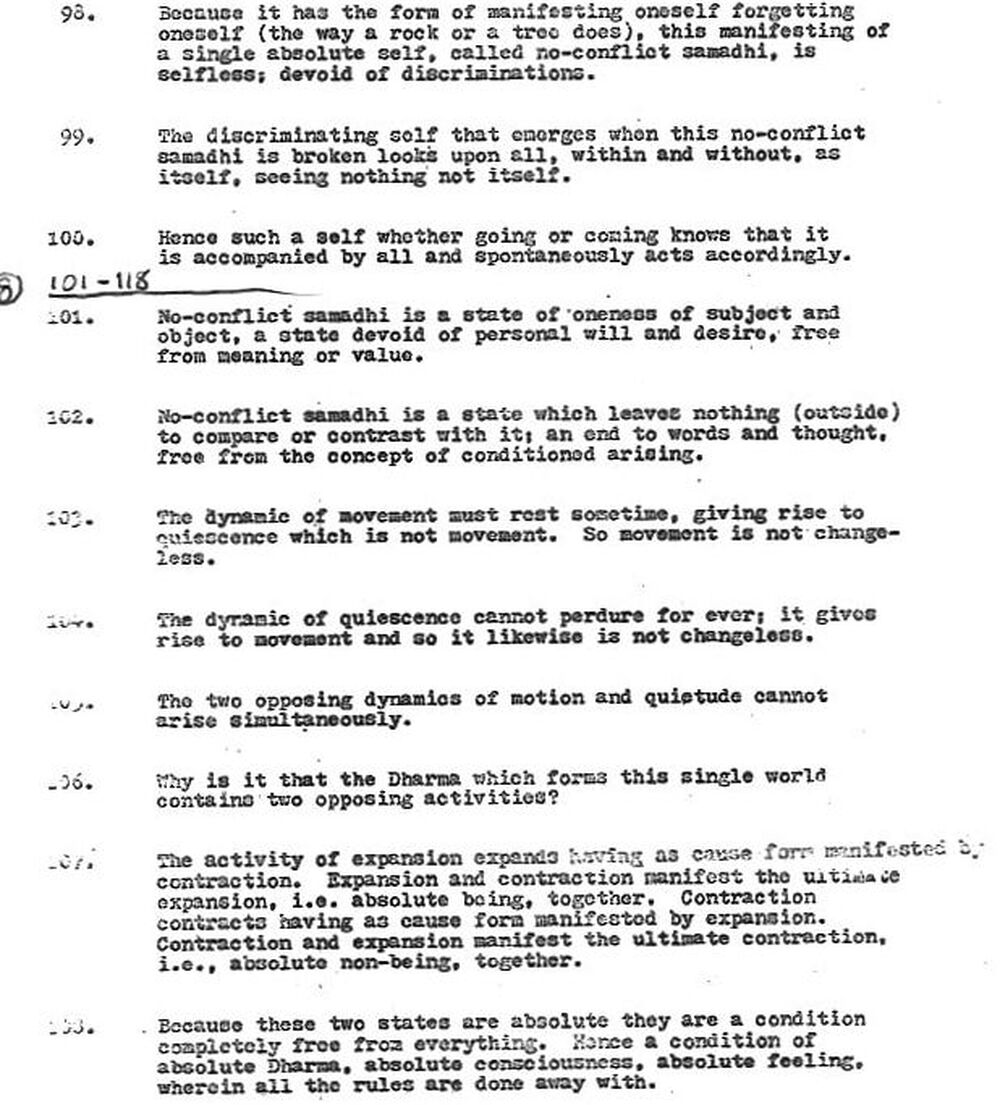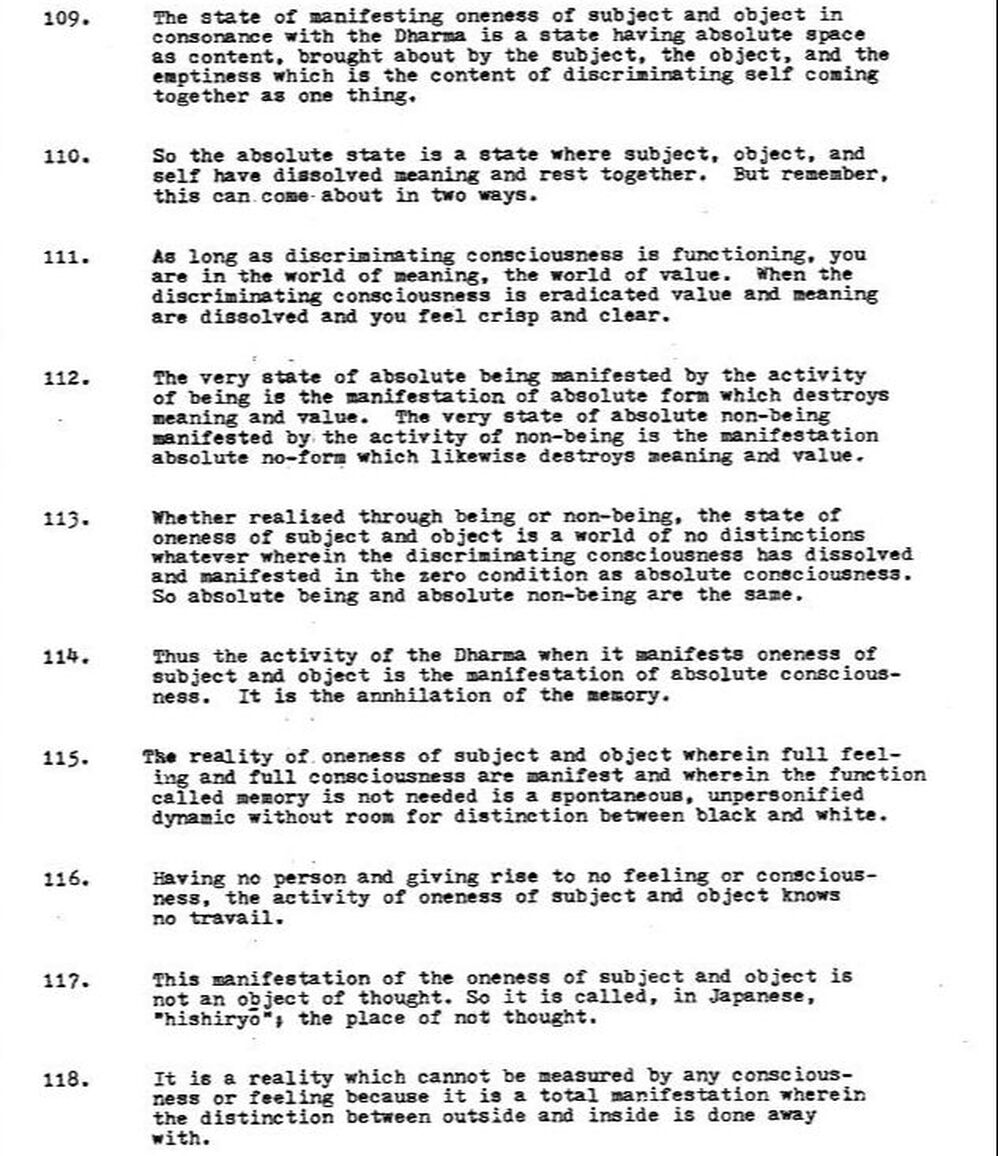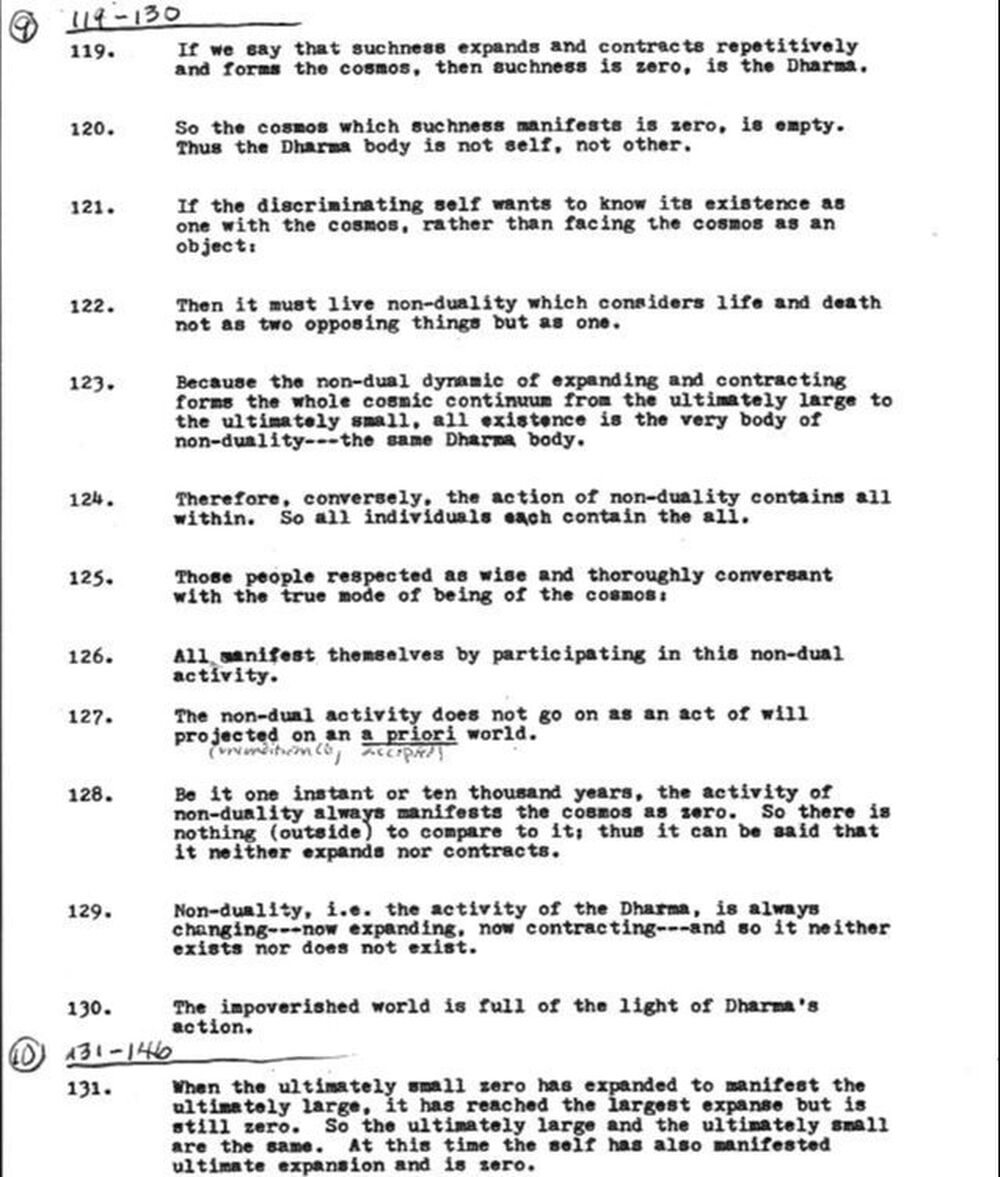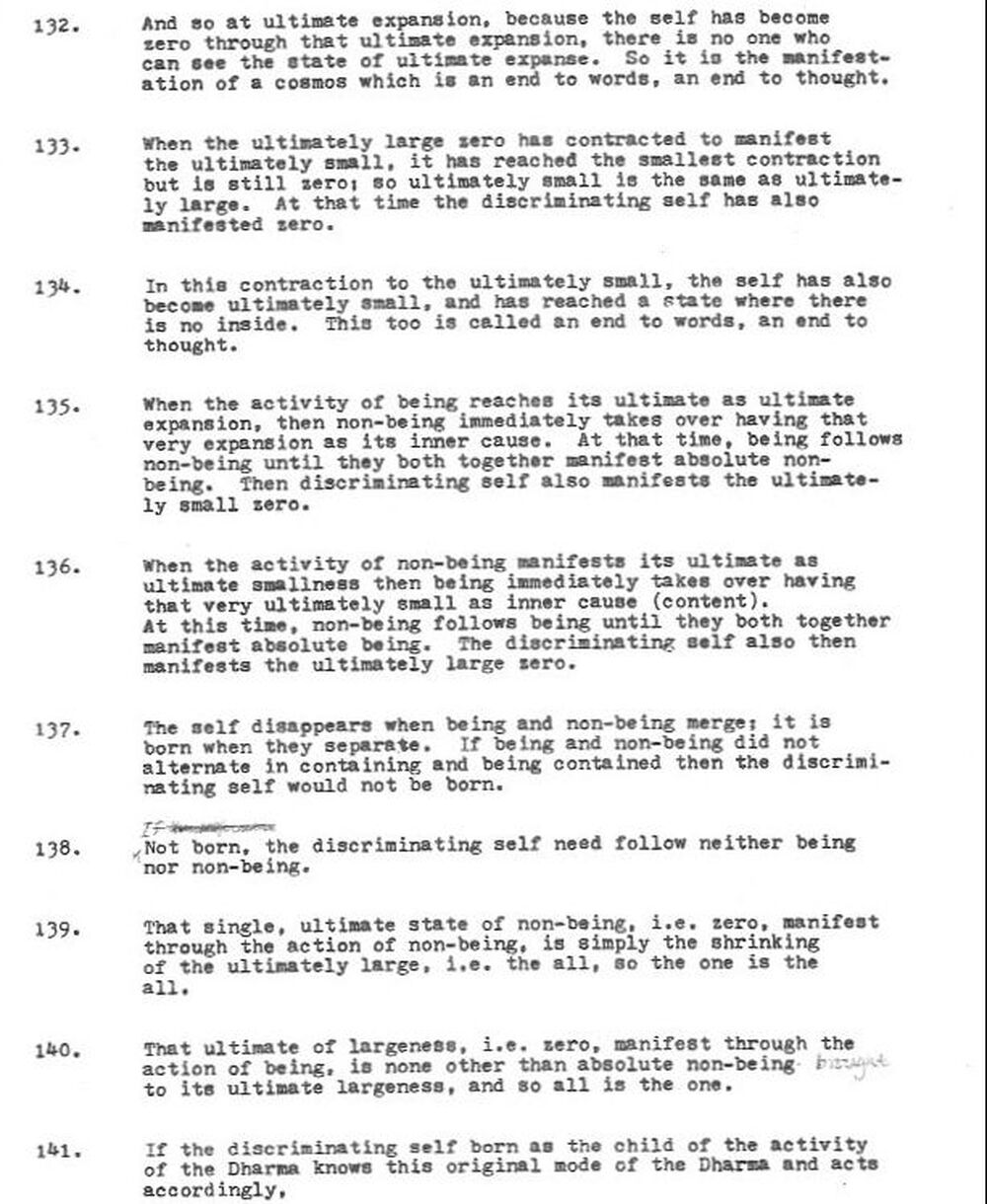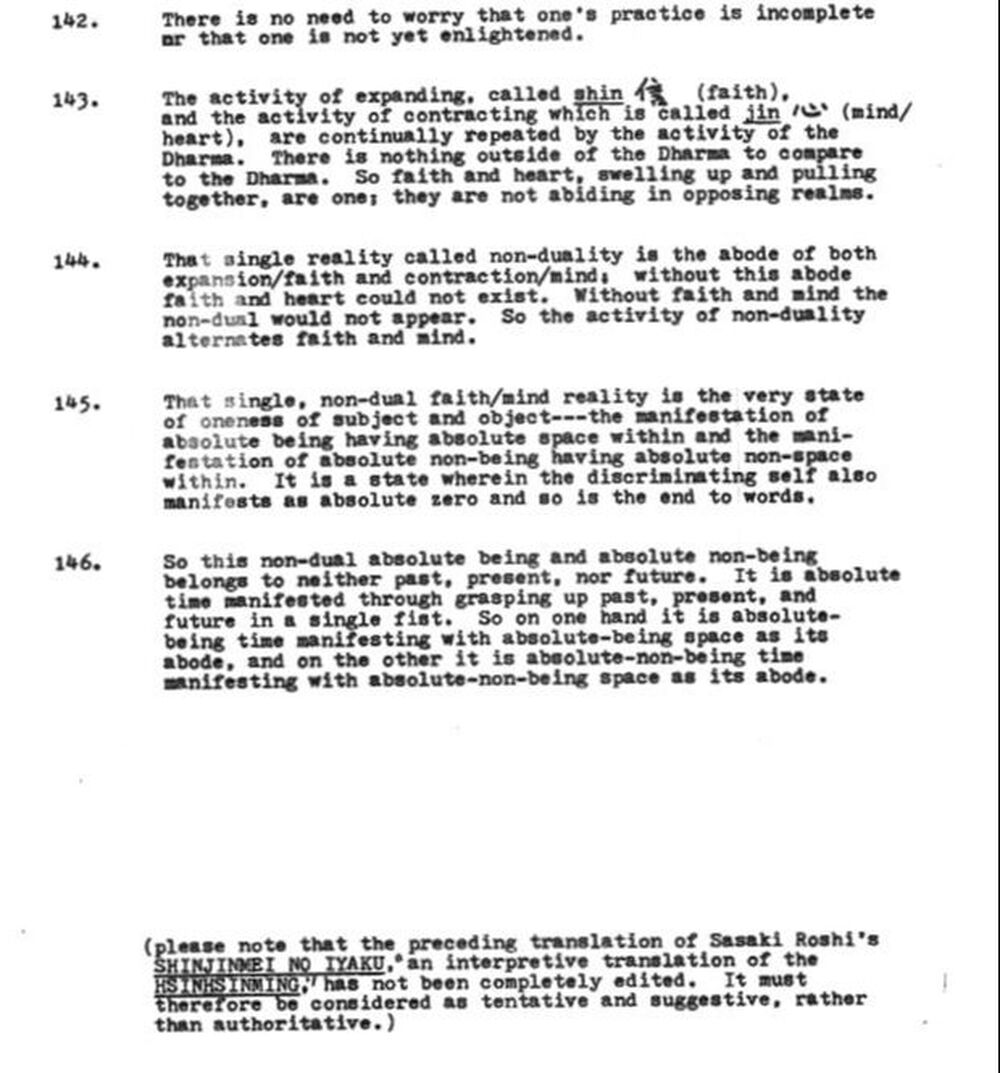STUDY TEXTS
JOSHU SASAKI excerpts of "teisho" from 1973
SHNJINMEI
|
The text is divided into ten sections for study over ten separate meetings, each line followed by Sasaki Roshi's commentary. English translation by Shinzen Young.
1-16_________________
10.This is the disease of the mind This flitting about of the self, unable to find its abode, is called the “illness of distinctions.” 11.When the deep meaning of the Way is not undestood, If you have not yet achieved the ability to discern the abode of being of the Dharma, 12. Peace of mind is disturbed to no purpose. Then all your efforts to attain samadhi will be in vain. 13. The Way is perfect is perfect like unto vast space The action of the Dharma is an egoless sphere, alternately expanding and contracting, just like empty space.
17-28_________________
29-40_________________
that state, it follows the activity of expansion. This is called building up.
41-52_________________
53-68_________________
69-84_________________
85-100_________________
101-118_________________
119-130_________________
131-146_____________
|
|
SHINJINMEI, commentary by Joshu Sasaki Roshi
